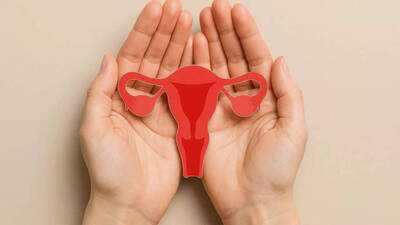The Trump administration’s One Big Beautiful Bill Act (OBBBA), signed in July 2025, introduced a new savings plan for children known as the Trump Account. The program is designed to help families build wealth for their children’s future while encouraging employer participation in parental support benefits.
These accounts are managed by approved financial institutions and are designed to grow over time through low-cost investments, such as mutual funds or index-based ETFs. The account’s value may rise or fall depending on market performance.
Employers can also contribute up to $2,500 per year, though participation is voluntary. These employer payments are not considered taxable income to the parent or child, and they count toward the $5,000 annual limit.
If fully utilized, the combined government, parental, and employer contributions could help a family build significant savings for their child’s future needs — such as education, housing, or other expenses in adulthood.
Eligible Parents/Guardians:
This incentive aims to encourage more companies to provide paid parental leave, though there is no universal federal mandate for private-sector workers.
Supporters say Trump Accounts could help American families save and invest for their children’s futures—especially when paired with employer contributions and tax advantages.
Critics, including analysts from the Brookings Institution, caution that the policy may benefit higher-income families more, since participation by employers is optional and contributions depend on household savings ability.
If your child is a US citizen born between 2025 and 2028, they qualify for the $1,000 deposit once the Trump Account system is active.
Q2: When can parents open accounts?
The Treasury Department plans to start accepting registrations by mid-2026 through approved banks and investment firms.
Q3: Can I withdraw money before my child turns 18?
Generally no — early withdrawals are subject to taxes and penalties unless used for approved expenses like education.
Q4: Is employer contribution guaranteed?
No. Employers may choose to participate voluntarily. Contributions depend on each company’s internal benefit policy.
Q5: How is this different from a 529 plan?
529 plans are limited to education expenses. Trump Accounts are broader investment tools that grow tax-deferred but are taxed when withdrawn.
What is a Trump account?
A Trump Account is a government-backed savings plan for children born between January 1, 2025, and December 31, 2028. The federal government will deposit $1,000 into an eligible child’s account after their birth is registered and a Social Security number is issued.These accounts are managed by approved financial institutions and are designed to grow over time through low-cost investments, such as mutual funds or index-based ETFs. The account’s value may rise or fall depending on market performance.
How much can parents and employers contribute?
Parents or guardians can contribute up to $5,000 per year to a child’s Trump Account. Contributions are tax-deferred, meaning the money grows tax-free until it’s withdrawn.Employers can also contribute up to $2,500 per year, though participation is voluntary. These employer payments are not considered taxable income to the parent or child, and they count toward the $5,000 annual limit.
If fully utilized, the combined government, parental, and employer contributions could help a family build significant savings for their child’s future needs — such as education, housing, or other expenses in adulthood.
Eligibility
Eligible Children:- Must be U.S. citizens or legal residents.
- Must be born between January 1, 2025, and December 31, 2028.
- Must register the child’s birth and obtain a Social Security Number for the child.
- Must open a Trump Account through a participating financial institution once enrollment begins (target date: July 2026, per Treasury guidance).
- Any U.S. employer may opt to contribute, provided they set up a Trump Account Contribution Program following federal guidelines.
How withdrawals work
Once the child turns 18, the account is transferred to their control. Funds can then be withdrawn under similar rules to retirement or education savings plans:- Withdrawals after age 18 are taxed as regular income.
- Early withdrawals may face a 10% penalty, unless used for specific expenses such as education costs.
Paid family leave incentives
The OBBBA also made permanent a federal tax credit for employers who offer paid family and medical leave. This credit—originally created under the Tax Cuts and Jobs Act—lets businesses claim between 12.5% and 25% of wages paid during qualified leave periods.This incentive aims to encourage more companies to provide paid parental leave, though there is no universal federal mandate for private-sector workers.
Supporters say Trump Accounts could help American families save and invest for their children’s futures—especially when paired with employer contributions and tax advantages.
Critics, including analysts from the Brookings Institution, caution that the policy may benefit higher-income families more, since participation by employers is optional and contributions depend on household savings ability.
FAQs
Q1: How do I know if my baby qualifies?If your child is a US citizen born between 2025 and 2028, they qualify for the $1,000 deposit once the Trump Account system is active.
Q2: When can parents open accounts?
The Treasury Department plans to start accepting registrations by mid-2026 through approved banks and investment firms.
Q3: Can I withdraw money before my child turns 18?
Generally no — early withdrawals are subject to taxes and penalties unless used for approved expenses like education.
Q4: Is employer contribution guaranteed?
No. Employers may choose to participate voluntarily. Contributions depend on each company’s internal benefit policy.
Q5: How is this different from a 529 plan?
529 plans are limited to education expenses. Trump Accounts are broader investment tools that grow tax-deferred but are taxed when withdrawn.





